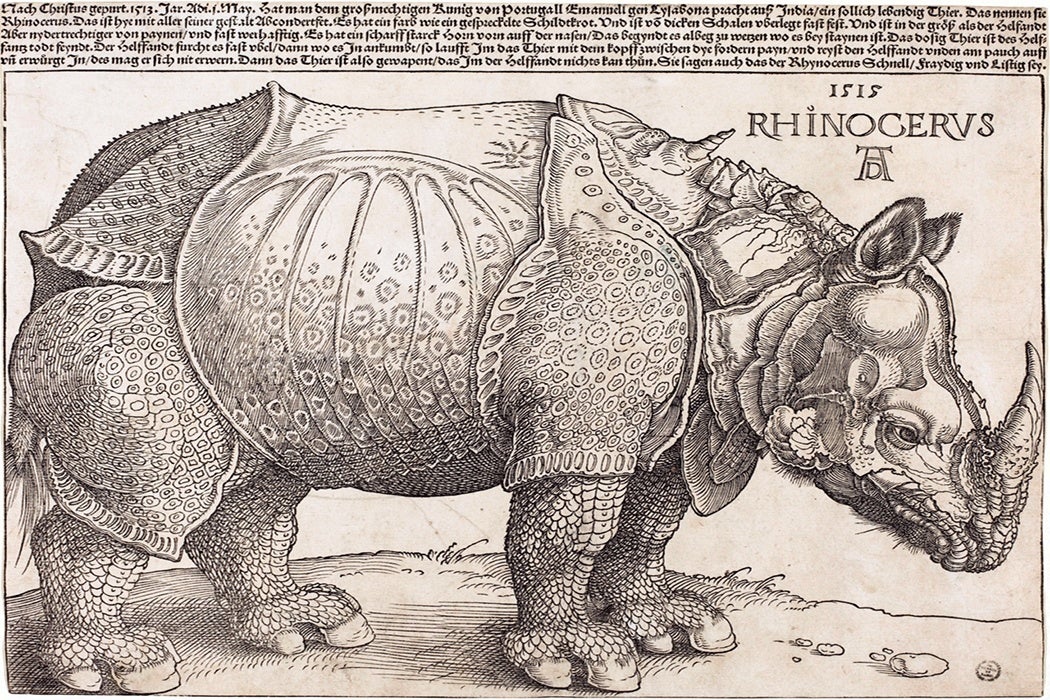Five hundred years ago in 1516, the first rhinoceros seen in Europe since the days of the Roman Empire drowned off the coast of Italy in a shipwreck. The Indian rhinoceros had been a gift to King Manuel I of Portugal from one of his colonial governors, who had originally received it from Sultan Muzafar II of Gujarat. The rhino caused a sensation upon being exhibited in Lisbon. It was being re-gifted to Pope Leo X when the ship it was on foundered. Yet the unfortunate rhinoceros, so far from home, achieved a kind of immortality in art.
For this was the rhinoceros portrayed by Albrecht Dürer in his famous woodblock print of 1515. Dürer, one of the most established and famous artists of the day, was like most people in Europe: he never actually saw the rhinoceros. He relied on a written description and sketch sent from Lisbon. Many more people ended up seeing his print than saw the actual rhinoceros. In fact, for two centuries, his enormously successful print was what Europeans thought of when they imagined a rhinoceros, largely because it was continuously reproduced in natural histories.
Dürer’s vision of the exotic animal is highly stylized, with plate-like skin and a second, smaller horn in the center of the shoulders above the head. Rhinoceros unicornis has only a single horn; the two species of African rhinos are double-horned, which may be where the confusion stemmed from. Or perhaps Dürer was thinking of burly unicorns? He was a renowned animal and plant artist, but in this case, his imagination had to be called upon.
Dürer’s rhinoceros also has unexpected significance in the history of media. This was the era when mass-produced images really took off. An edition of 4000-5000, as in this case, was revolutionary compared to the beginning of the 15th century. As Jesse Feiman notes, some have argued that printed images like Dürer’s “rivaled, or even superseded” the texts coming off the new printing presses. There were few literate persons, after all. Images could speak directly to many more people. This was the beginning of the Protestant Reformation: the only book known to most people, the Bible, was tightly controlled by the clergy. But mass-produced images like the rhinoceros spread far and wide, especially in pirated copies.
The power of print-making depends on the ability of printmakers to repeat an image over and over, but Feiman challenges this notion by analyzing how Dürer’s image changed over time, especially as the original matrix, a wooden block, wore down and cracked with repeated use. The canonical surviving prints in museums only touch upon the “changing meanings, changing audiences and changing notions of authorship and authenticity” over the history of the image.
Today we see versions of this artist’s vision of a fabulous animal in several museums. These images have become a kind of memorial for the actual rhino, however inaccurate from a purely natural history perspective, and still speak to us a half a millennium later.







